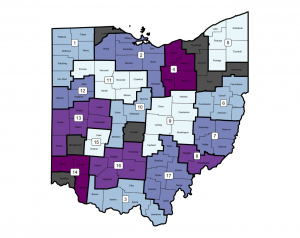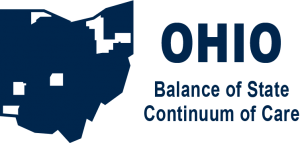Governance and Policies
Request for New Ohio BoSCoC Board Members
Ohio BoSCoC Planning Regions
The 80 counties within the Ohio BoSCoC are divided into 17 Homeless Planning Regions. Homeless program representatives in these Homeless Planning Regions plan and coordinate local homeless systems and programs and are responsible for working with ODOD and COHHIO to ensure all HUD homeless program requirements are met. The Homeless Planning Regions report to COHHIO and ODOD, not to HUD. A map of the 17 BoSCoC Homeless Planning Regions can be found below.
These Homeless Planning Regions are also responsible for meeting all requirements pertaining to state-level homeless program funding (funded through the Ohio Housing Trust Fund) administered by ODOD. These programs include the Emergency Solutions Grant Program (ESG), Homeless Crisis Response Program (HCRP), and the Supportive Housing Program (SHP). For these state programs, the Homeless Planning Regions and, in some cases, homeless services providers report directly to ODOD. More information about state-funded homeless programs can be found at http://www.development.ohio.gov/cs/cs_hshp.htm.
In sum, the Ohio BoSCoC Homeless Planning Regions help homeless services providers and communities meet the requirements of both their federal grant (HUD’s CoC Program) and state grants (ODOD’s ESG, HAGP, HCRP, and SHP).
Ohio BoSCoC Homeless Planning Regions
Roles of COHHIO and ODOD
The Ohio Department of Development, Office of Community Development (ODOD), has been designated by the Ohio BoSCoC Board to serve as the Collaborative Applicant and the grantee for the CoC Planning grant. Additionally, ODOD staff serve as co-chair of the Ohio BoSCoC Steering Committee and have a standing seat on all other BoSCoC committees/workgroups.
COHHIO provides primary staff support for all activities pertaining to the Ohio BoSCoC including facilitating CoC committee meetings, collecting and submitting PIT/HIC data to HUD, preparing the annual BoSCoC CoC application, and implementing all processes related to program performance management and improvement. As the Homeless Management Information System (HMIS) Lead, COHHIO staff provide technical assistance to providers on the BoSCoC HMIS, basic programmatic issues, and other housing and homelessness related issues as needed. COHHIO’s Continuum of Care Director and Coordinators are the primary contacts for all Ohio BoSCoC work.
ODOD is also the state agency responsible for administering federal Emergency Solutions Grant funds and state homeless program funds. In this role, ODOD works to align state and federal program requirements and to ensure coordinated community planning across funding streams.
Ohio BoSCoC Board, Committees, and Workgroups
The Ohio BoSCoC has several standing committees/workgroups in addition to the CoC Board. Additional workgroups are added as needed. Following is a list and descriptions of the current BoSCoC committees/workgroups.
BoSCoC Board
The BoSCoC Board (also referred to as the CoC Board) is the primary planning body for the BoSCoC. Its members are responsible for making recommendations on policy decisions and reviewing and approving the work of the Steering Committee. In addition, the CoC Board approves the project evaluation process and completion of the CoC application for HUD funding. Members include housing and homeless service providers, funders, advocates, and a representative from every BoSCoC Homeless Planning Region.
The BoSCoC Board meets every other month.
BoSCoC Steering Committee
The Steering Committee is responsible for leading and engaging in most of the work related to maintenance of the Ohio BoSCoC and submission of the annual CoC Program application. Committee members also develop the application process plan, review and score HUD applications submitted by BoSCoC members, and engage in long-term CoC strategic planning. Members of the committee include the Board chair and staff of ODOD, COHHIO, and the Ohio Department of Mental Health and Addiction Services.
The Steering Committee meets monthly.
BoSCoC Performance and Outcomes Committee
The Performance and Outcomes Committee is responsible for developing and implementing plans for the monitoring of BoSCoC homeless programs as well as the BoSCoC system, with an emphasis on outcomes. Committee members engage in the development of program performance improvement plans, and provide input to the Steering Committee and BoSCoC Board regarding renewal programs/outcomes for the CoC application process. The Committee is also responsible for the development and management of plans for system-wide performance.
The Performance and Outcomes Committee meets quarterly.
BoSCoC Project Evaluation Workgroup
The Project Evaluation Workgoup develops the annual project evaluation process that is used to evaluate, score, and rank renewal CoC projects and facilitate funding recommendations for projects included in the annual CoC consolidated application. Membership includes COHHIO CoC staff, ODOD staff, and volunteer members.
The Project Evaluation Workgroup meets on a bi-monthly basis in the months preceding and during the annual CoC application period.
Joint HMIS Advisory Committee
The Joint HMIS Advisory Committee include representatives from both the Ohio BoSCoC and the Mahoning County Homeless CoC (MCHCoC), since the CoCs have a shared HMIS implementation. The Committee provider policy and implementation guidance to the HMIS implementations.
The committee meets on a bi-monthly basis.
BoSCoC Veterans Homelessness Workgroup
The Veterans Homelessness Workgroup is responsible for leading the Ohio BoSCoC Response to Veterans Homelessness. More information can be found on the Veterans Homelessness page. The Veterans Homelessness Workgroup meets monthly.
Youth Action Board
The YAB is an active group of up to 20 young adults from across the state ages 18-24 who share their experience and work together to ensure the Ohio BoSCoC policies and system responses reflect the needs of young people. The YAB meets twice a month online and occasionally in person; training and support are provided! Follow us on Facebook: https://www.facebook.com/OHBoSCoCYAB/
BoSCoC Coordinated Entry Core Team
The Coordinated Entry Core Team is responsible for leading the work related to Coordinated Entry in the BoSCoC. More information can be found on the Coordinated Entry page.
Ohio BoSCoC Documents
Ohio BoSCoC Governance Charter
Ohio BoSCoC Governance Charter
HUD, via the Continuum of Care Program Interim Rule, requires that Continua of Care (CoC) establish written guidelines for how responsibilities are assigned within the Continuum of Care and the expectations associated with how the work will be conducted. The Ohio BoSCoC Governance Charter outlines how the the Ohio BoSCoC will be governed for purposes of assisting the CoC to achieve its vision of ending homelessness in the Ohio BoSCoC in 20 years.
Ohio BoSCoC Homeless Program Standards
Ohio BoSCoC Homeless Program Standards – updated October 2023
HUD, via its Emergency Solutions Grant Rules and Regulations (ESG) and the Continuum of Care Program Interim Rules, requires that Continua of Care (CoC) establish and consistently follow written standards for providing CoC and ESG assistance. The Ohio BoSCoC has developed these Ohio BoSCoC Homeless Program Standards to fulfill these requirements and to help move the Ohio BoSCoC forward in achieving its Strategic Plan Vision of ending homelessness in the Ohio BoSCoC. In addition to meeting federal requirements, these standards will also help the Ohio BoSCoC ensure more consistent use of best practices and help to standardize program design and implementation across our homeless system.
Ohio BoSCoC Performance Management Plan
The Ohio Balance of State Continuum of Care (BoSCoC) Performance Management Plan identifies project and system performance goals for the CoC and outlines how performance is measured and monitored.
The Ohio BoSCoC Performance Management Plan is located on the Performance and Monitoring page.
Ohio BoSCoC Strategic Plan to End Homelessness
Ohio BoSCoC Strategic Plan to End Homelessness, Updated 2016
Ohio BoSCoC Membership Meetings
Ohio BoSCoC Membership Meeting Presentation – September 17,2025
Ohio BoSCoC Membership Meeting Presentation (recording) – September 17,2025
Ohio BoSCoC Membership Meeting Presentation – June 10, 2025
Ohio BoSCoC Membership Meeting Presentation (recording) – June 10, 2025
Ohio BoSCoC Membership Meeting Presentation – March 13, 2025
Ohio BoSCoC Membership Meeting Presentation (recording) – March 13, 2025
Ohio BoSCoC Membership Meeting Presentation – October 3, 2024
Ohio BoSCoC Membership Meeting Presentation (recording) – October 3, 2024
Ohio BoSCoC Membership Meeting Presentation – March 2024
Ohio BoSCoC Membership Meeting Presentation (recording) – March 2024
Ohio BoSCoC Membership Meeting Presentation – August 2023
Ohio BoSCoC Membership Meeting Presentation (recording) – August 2023
Ohio BoSCoC Membership Meeting Presentation – March 2023
Ohio BoSCoC Membership Meeting Presentation (recording) – March 2023
Ohio BoSCoC Membership Meeting Presentation – November 2022
Ohio BoSCoC Membership Meeting Presentation (recording) – November 2022
Ohio BoSCoC Membership Meeting Presentation – May 2022
Ohio BoSCoC Membership Meeting Presentation (recording) – May 2022 *Passcode: 25zNu6&C
Ohio BoSCoC Membership Meeting Presentation – September 2021
Ohio BoSCoC Membership Meeting Presentation (recording) – September 2021
Ohio BoSCoC Membership Meeting Presentation – July 2020
Ohio BoSCoC Membership Meeting Webinar (recording) – July 2020



